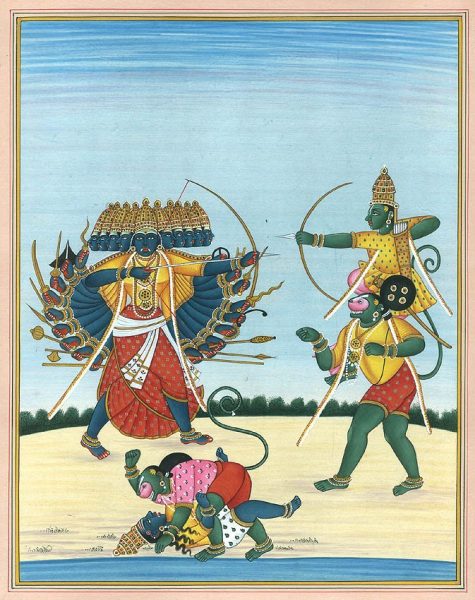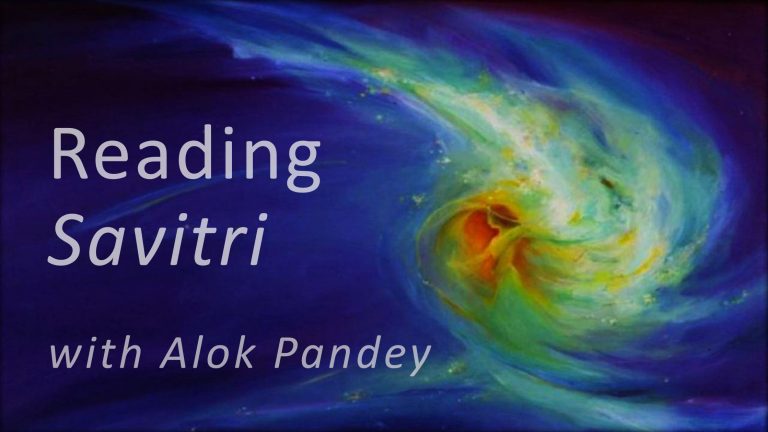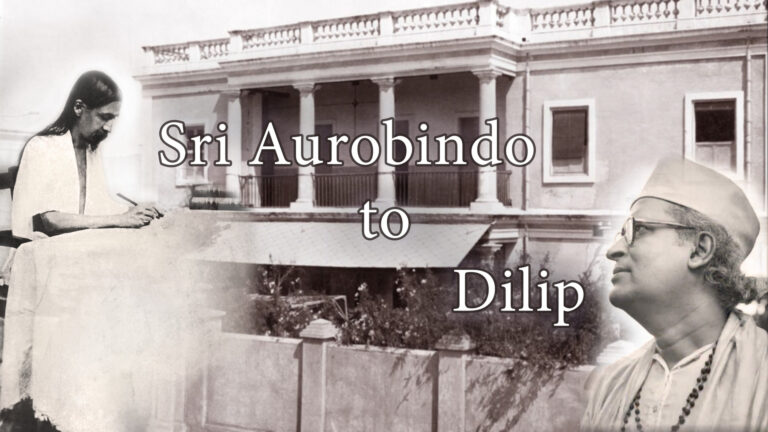In practical terms it means that a myth has at least three layers to it. The first is of course the visible outer body, the story so to say. This story itself is modified with passage of time just as the human body undergoes changes. However, there are two kinds of modifications that take place, one that preserves the basic truth of the myth and hence keeps some essential continuity with its central thought, at least to a large extent. Thus, for example we have the two prominent versions, among many, of the Ramayana, the Valmiki Ramayana which is the original one and its later version by Tulsidas. The details differ and so does the style in both. But the essential story remains the same, the fundamental truth is also undisturbed. It is just that the approaches are different. While Valmiki seems to approach the personality and life and times of Lord Rama from great spiritual heights, Tulsi Ramayana approaches it from a deeper psychic heart. They beautifully complement each other. But there are now newer versions of the story being written and screened where the author is not at all in sympathy with the times or the character and has often given his own unique twist to suit his ideological or political purpose. Take for example this twist that since all history  is written by victors, Ramayana too suffers this distortion. The next logical step is that Ravana was actually the good guy, the hero of the plot whereas it was Rama who was the actual villain. So too with the Mahabharata where we see some intellectual versions that suddenly turn Krishna and the Pandavas as villains while extolling the Kauravas and Karna and the rest. One can only laugh at the puerile and motivated thinking of such individuals that take almost a malicious interest in distorting history. To start with neither Valmiki nor Vyasa, leave aside Tulsidas and many others were court philosophers appointed by the victors and had no reason or business to distort history. If at all they were seers and revered in the plot itself. Secondly, if we take a closer look at the characters we will discover, sometimes to our moral dismay that the story is not about black and white as the modern mind would like to portray it. There are many shades of grey through which the characters and the actual narrative moves and evolves. In fact, that is one reason why these great scriptures have endured the rub of time, since they are closely woven with the psychological fabric of our life where there are not so clear-cut blacks and whites but shades of grey through which we evolve towards the truth of our being. It is in fact, as the Gita itself affirms about Sri Krishna’s mission, about the evolutionary march of mankind, about a stage in the collective advance of mankind rather than a simple moral science book preaching us about the do’s and don’ts. The word often used is dharma which is the term used to denote this evolutionary struggle that runs as the central theme of this plot, and not moral or ethical, a term that is at best its intellectual and modern distortion in an alien language. One may even say that if one does not understand dharma then it is difficult to decipher these epics. Often the modern readers not in sympathy with this profound term because they have lost contact with it, tend to turn these wonderful epics merely into stories with social and moral themes. Naturally when the stories do not neatly fit into these definitions then all kinds of explanations are built either to justify or else to denounce the epic! This is so because we have failed to decode the real sense of the word and we cannot unless we enter into sympathy with the times and life of the people as it was organized then. That is why the elaborate explanations given by intellectuals trained in Harvard Schools and our own version of it break down with the first proper scrutiny by someone who has dwelt into the spirit of these scriptures.
is written by victors, Ramayana too suffers this distortion. The next logical step is that Ravana was actually the good guy, the hero of the plot whereas it was Rama who was the actual villain. So too with the Mahabharata where we see some intellectual versions that suddenly turn Krishna and the Pandavas as villains while extolling the Kauravas and Karna and the rest. One can only laugh at the puerile and motivated thinking of such individuals that take almost a malicious interest in distorting history. To start with neither Valmiki nor Vyasa, leave aside Tulsidas and many others were court philosophers appointed by the victors and had no reason or business to distort history. If at all they were seers and revered in the plot itself. Secondly, if we take a closer look at the characters we will discover, sometimes to our moral dismay that the story is not about black and white as the modern mind would like to portray it. There are many shades of grey through which the characters and the actual narrative moves and evolves. In fact, that is one reason why these great scriptures have endured the rub of time, since they are closely woven with the psychological fabric of our life where there are not so clear-cut blacks and whites but shades of grey through which we evolve towards the truth of our being. It is in fact, as the Gita itself affirms about Sri Krishna’s mission, about the evolutionary march of mankind, about a stage in the collective advance of mankind rather than a simple moral science book preaching us about the do’s and don’ts. The word often used is dharma which is the term used to denote this evolutionary struggle that runs as the central theme of this plot, and not moral or ethical, a term that is at best its intellectual and modern distortion in an alien language. One may even say that if one does not understand dharma then it is difficult to decipher these epics. Often the modern readers not in sympathy with this profound term because they have lost contact with it, tend to turn these wonderful epics merely into stories with social and moral themes. Naturally when the stories do not neatly fit into these definitions then all kinds of explanations are built either to justify or else to denounce the epic! This is so because we have failed to decode the real sense of the word and we cannot unless we enter into sympathy with the times and life of the people as it was organized then. That is why the elaborate explanations given by intellectuals trained in Harvard Schools and our own version of it break down with the first proper scrutiny by someone who has dwelt into the spirit of these scriptures.
Savitri’s being has recovered her universal Self in its static and dynamic poises.



